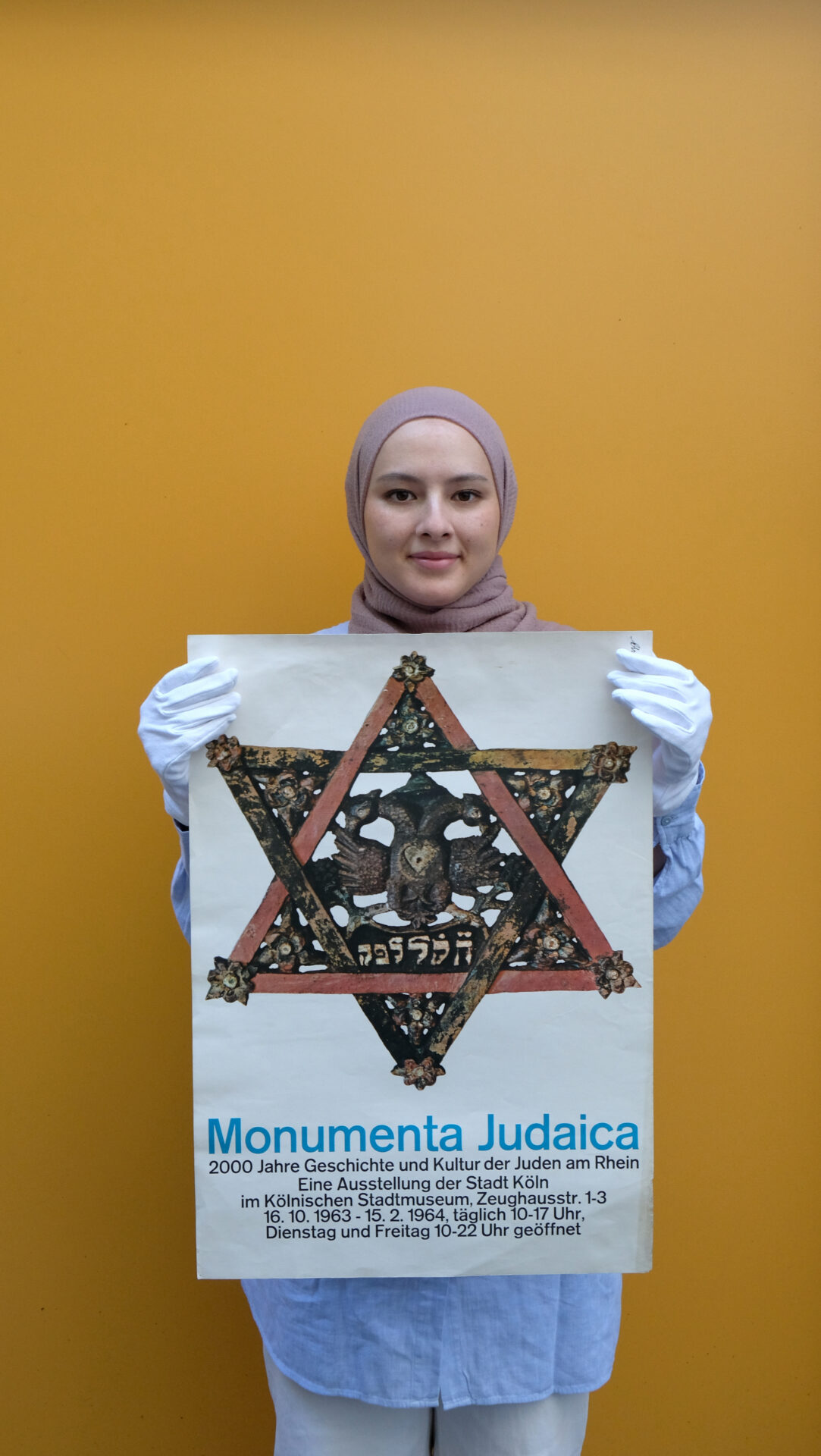«The young people were not cheerful in the museum.»
Alliya Oppliger looks back at Monumenta Judaica on its 60th anniversary.
The exhibition Monumenta Judaica. 2000 Years of History and Culture of the Jews on the Rhine opened in Cologne on 15 October 1963. It was the first major exhibition on Jewish religion and art in the Rhineland. Alliya Oppliger, a history student and intern at the Jewish Museum of Switzerland researched the history of Monumenta Judaica on the occasion of its sixtieth anniversary. Museum director Naomi Lubrich asked her about its significance today.
Naomi Lubrich: Alliya, in 1963, Monumenta Judaica opened at the Cologne City Museum. What was its scope?
Alliya Oppliger: The exhibition was large and comprehensive. Its aim was to show 2000 years of community and intellectual life of Jews in the Rhine area, from Basel to Emmerich. 2200 artifacts were on loans from libraries and museums in 15 cities, among them Washington, the Vatican, Moscow, London, Vienna, Copenhagen, Budapest, Amsterdam and of course Germany.
NL: What were the reasons for mounting this exhibition?
AO: One of the goals was political: In December 1959, someone vandalized the Cologne synagogue in the Roonstrasse, and this incident triggered a wave of antisemitic graffiti and incidents throughout West Germany. Cologne decided to counteract the antisemitism with an information campaign. At first, the city considered showing the exhibit Synagoga, which had been on display in Recklinghausen. Synagoga (1960/61) was the first major exhibition on Judaism in post-war Germany, showing magnificent cult objects. Ultimately, however, the city decided to mount its own exhibition with a different focus, modelled on the regional history exhibitions of the Weimar period, particularly the Jewish section of the 1925 Millennium Exhibition of the Rhineland.
NL: Who financed the exhibition?
AO: The costs were divided into three parts: The city of Cologne paid for one part, the federal and state governments for the second part, and the last part came from the proceeds from ticket and book sales.
NL: What was the concept of the exhibit?
AO: The motivation for the exhibit was, in first place, educational. It showed Jewish-Christian coexistence and their mutual cultural and religious influences. Less than twenty years after the war, the exhibition wanted to counter the hateful images of Jews the Nazis had ingrained. Many of the exhibition’s ideas were innovative: For example, the curators avoided showing Jewish history merely as a story of persecution. They focused on how many Jewish traditions were born from the surrounding culture. Unlike many other exhibitions which displayed the biographies of famous Jews, Monumenta Judaica looked at the lives of normal people.
NL: What was the reception of the exhibit?
AO: With 114,450 visitors, it was well-attended. Group tours were organized for church members, education initiatives, for representatives of the armed forces and politicians. Among the visitors were the president of the Federal Republic of Germany Heinrich Lübke, cardinal Frings, the former Israeli prime minister Moshe Sharett, the president of the World Zionist Organisation Nahum Goldmann and the co-founder of the Leo Baeck Institute, Siegfried Moses. The exhibition succeeded in attracting young visitors: 70,232 visitors, more than 61% of the total number of visitors, were teenagers and young adults. Several journalists remarked that the exhibition inspired the young generation to reflect on Germany’s most recent history, for instance the lawyer Curt C. Silbermann, who observed in the German-Jewish exile newspaper Aufbau:
«The young visitors in the museum were not cheerful; they were extremely serious and felt visibly insecure in an environment that was alien to them and had been distorted by their parents. If this group of young people is representative for their generation, the conclusion is positive, namely that these young people are seeking contact, are learning for themselves and are forming their independent ideas, meaning ideas that are independent of those they learned at home. At the same time, admittedly, an encounter with museum objects cannot replace an encounter with living beings, despite the good explanations by word and writing.» (7 February 1964).
NL: How interesting! We love to hear about the impact of museums on society. Dear Alliya, thank you for this insight into Monumenta Judaica, the exhibition that also inspired the founding of the Jewish Museum of Switzerland.
verfasst am 16.10.2023



